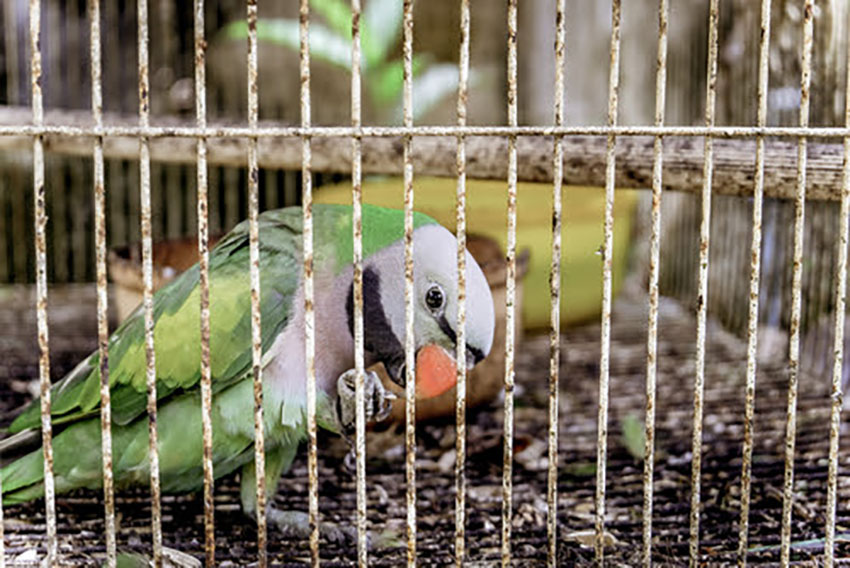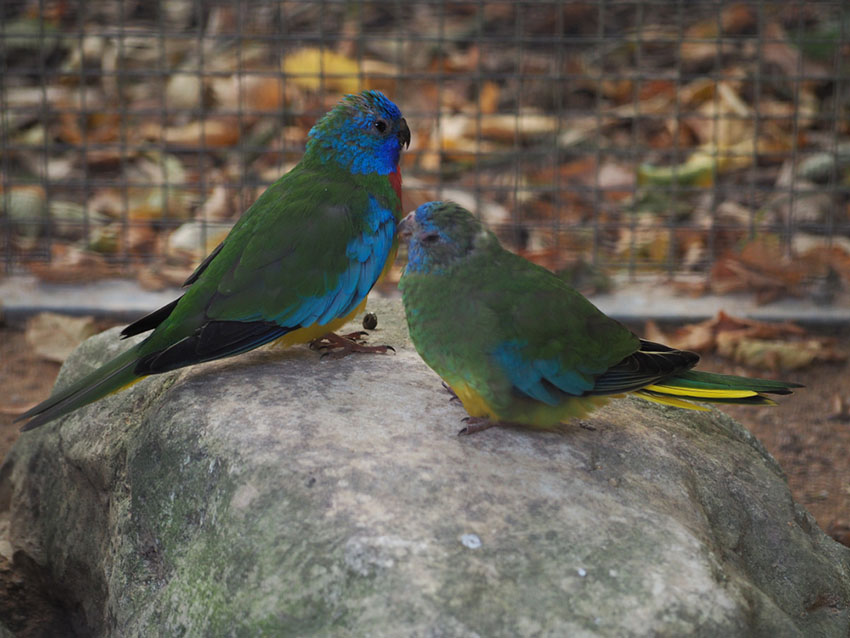There are several human diseases that can, theoretically, be caught from parrots. However, it is important to bear in mind that illness in parrots is very much the exception, rather than the rule. Most birds live predominantly healthy lives, and it is very rare for their human keepers to suffer parrot-related health problems.
With that in mind, here is a list of parrot-derived human ailments.
- Salmonella. This well-known bacterial disease lives in the intestines of many birds, notably chickens and ducks. It is excreted in droppings, and infection is a danger if you don’t wash your hands after cleaning cages and aviaries. Symptoms include vomiting, diarrhoea and fever, and infection is very serious matter.
- Giardia. This is another intestinal-bacteria-borne disease. Once again, It is transmitted via birds’ droppings, and can therefore contaminate cages, aviary water supplies and the surrounding ground. Humans who contract the disease will suffer gastro-intestinal problems; and infected bird will suffer from diarrhoea and rapidly decline and die.

This Derbyan Parakeet's dirty cage is a breeding ground for health problems
- Parrot Fever, aka Chlamydia psittaci or Avian chlamydiosis (AC). In birds the disease manifests as a respiratory infection. Infected birds will be lethargic and have eye discharge and diarrhoea. Humans can catch parrot fever by inhaling the dust of a contaminated cage or ingesting faeces or urine (usually by failing to wash hands after cleaning the bird). Handling an infected bird can also pass on the disease. The symptoms are similar to flu or pneumonia, varying in severity from victim to victim, but potentially lethal if treatment is not sought.
- Avian Tuberculosis (TB). Infected birds have loose droppings, dull plumage, lethargy and general rapid decline. Humans can catch it via ingestion or inhalation of contaminated droppings; although infection is very rare. One of the problems is that contaminated bird faeces can persist in the soil of aviaries for many years. If there is any sign of the illness, wear rubber gloves and a mask when cleaning the cages, and wash yourself afterwards with an antiseptic soap.
- HistoPlasmosis. This is a fungus that grows in bird dropping-enriched ground. Humans can catch it if they inhale the fungal spores, causing a mild lung infection. It is not life-threatening, as long as the victim is fairly robust.
- Allergic alveolitis. This bronchial disease is often known as "pigeon fancier’s lung", due to its association with those birds. "Budgerigar (or parakeet) dander pneumoconiosis" is another tag. The cause of the problem is dust from bird feathers and dried droppings. Once the asthma-like symptoms have manifested, continued exposure to the birds will make the condition worse. In its chronic form, if the sufferer has failed to stop breathing in the irritant, the process can no longer be reversed, and lung capacity will be permanently diminished.
- Aspergillus is another respiratory disease, caused by a fungus that colonises damp and/or dirty aviaries. Birds can catch it, and humans will be infected by the same environmental fungi, rather than catching it from the parrots themselves.
- Asthma – People prone to asthma will be affected by parrots. In severe cases the presence of a bird in the same room as the sufferer will bring on the wheezing and other symptoms, and the only solution is for that person to leave the room. Asthma sufferers with a less severe condition should be fine if the birds are in cages, but may start to show symptoms if the parrots are free-flying. This general asthmatic problem is not to be confused with the condition known as Allergic alveolitis, described above.

Comments
Lynda, 27 December 2021
Thankyou so much for all the information. I was really struggling with my zoology assignment until I saw your article. Fantastically informative!
Marcia, 31 December 2019
Vomiting, diarrhea, deep, hard cough with mucus,, problems breathing, worsened with antibiotics, duration several weeks. Raise quail and clean cages often.